Hangzhou Jindi Jiufenghui
-
Location
Hangzhou
-
Client
Jindi Group
-
Design
Zhiyi Design
In order to pursue the simple and generous building facade effect and follow the trend of the times, in recent years, more and more projects use the materials of large size. However, although the scheme is good, if the materials, processes and teams are not strictly controlled, not only the landing effect cannot be guaranteed, but also the safety is a big problem. In the following, taking the projects that FORCITIS participated in recent years as an example, we share the experience on how to achieve better landing when using facade materials with large size.

Jindi · Jiufenghui is located in the main city of Hangzhou. In the project design, through the rational use of modern materials and techniques, the oversized overhanging eaves and glass boxes outside the building are created, and all the modules such as artistic beauty and spiral stairs inside the building are combined to present the feeling of a high-end, generous and high-grade art museum.
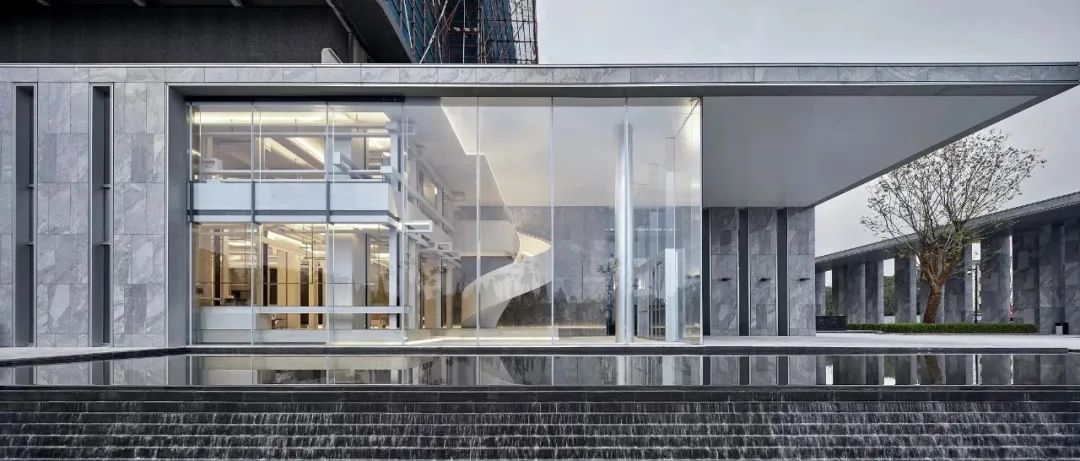
01 12M ultra-high white glass, surpassing Apples
At first glance, the most striking thing is undoubtedly the creation of all-glass facade in the lobby department, which is also the key area of the project. At the beginning of the project design, the cost and effect of this part were weighed and chosen. Through the practice of different project cases and the field investigation of similar projects, the scheme of special glass with a height was finally retained.
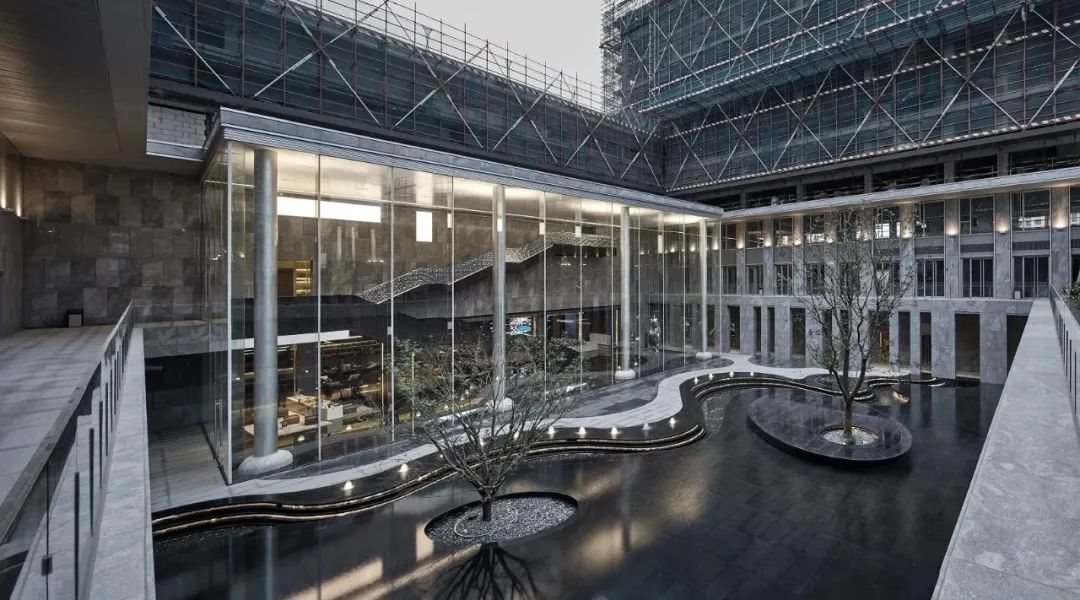
The ultra-high white glass used in the project has a height of 12m and the weight of a single piece of glass is nearly 2 tons, which even exceeds the height of Apple flagship store in New York. The materials of large size put forward higher requirements for design and construction. In order to ensure better landing, the load-bearing problem of glass ribs and plates is reasonably solved through the hanging system in technology, and tedious metal components are cancelled, so that the facade remains intact and the sense of space quality is further enhanced. The self-explosion rate of all-glass facade also needs to be controlled emphatically. For this purpose, the designed glass is super-white and super-treated, which can not only ensure the purity of color, but also effectively reduce the self-explosion rate of glass.
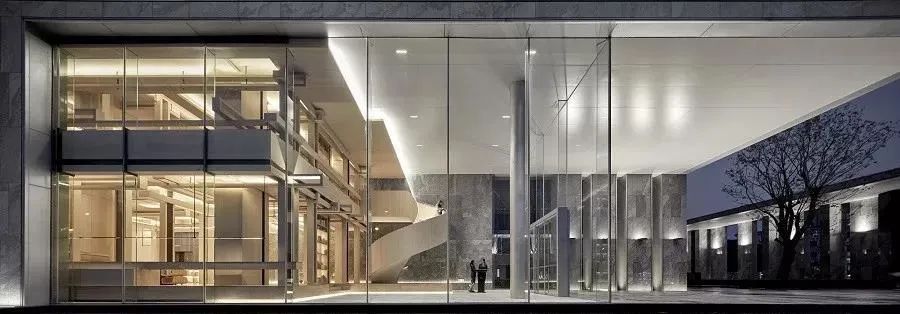
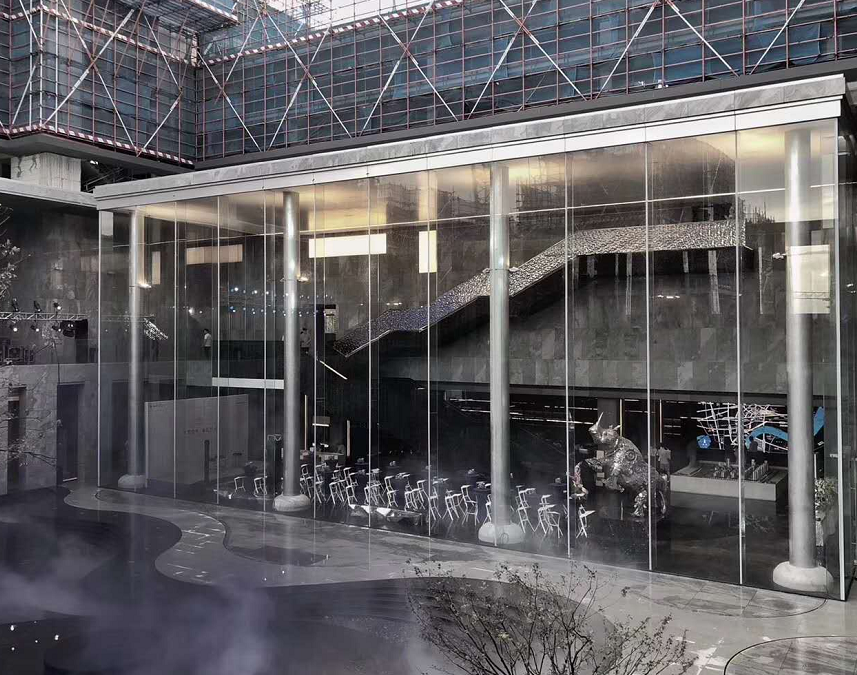
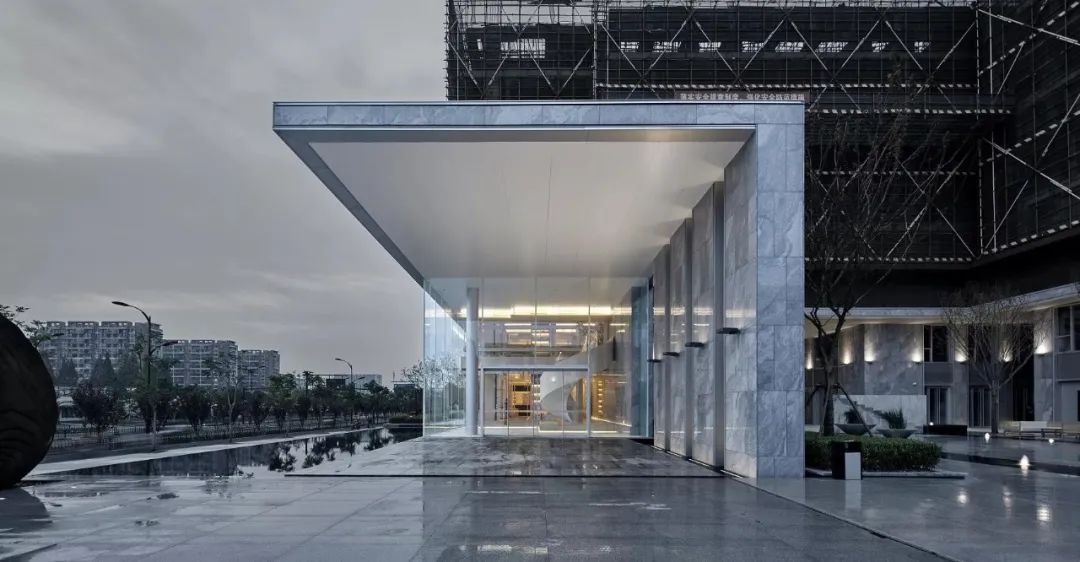
02 7T aluminum alloy grille, continuous and complete
The total amount of aluminum alloy grilles used in the project is 7 tons, and each grille needs to be positioned. Because the metal plate is easy to deform, in order to solve the flatness problem, the size of the ceiling plate is divided and controlled reasonably in the design stage, and the steel keel with stronger rigidity is used as the supporting part in the connection system. The single aluminum ceiling is too singular, lacking exquisite feeling and obvious seam, and its integrity is not strong, which is inconsistent with the overall design concept. Thus, after the project team compared multiple schemes, 20*20 aluminum alloy decorative profiles were added to enrich the details. The aluminum alloy profiles can also play a certain role in eliminating the flatness of aluminum plate ceiling. There are not splicing glue lines in the ceiling, and the effect is continuous after completion.
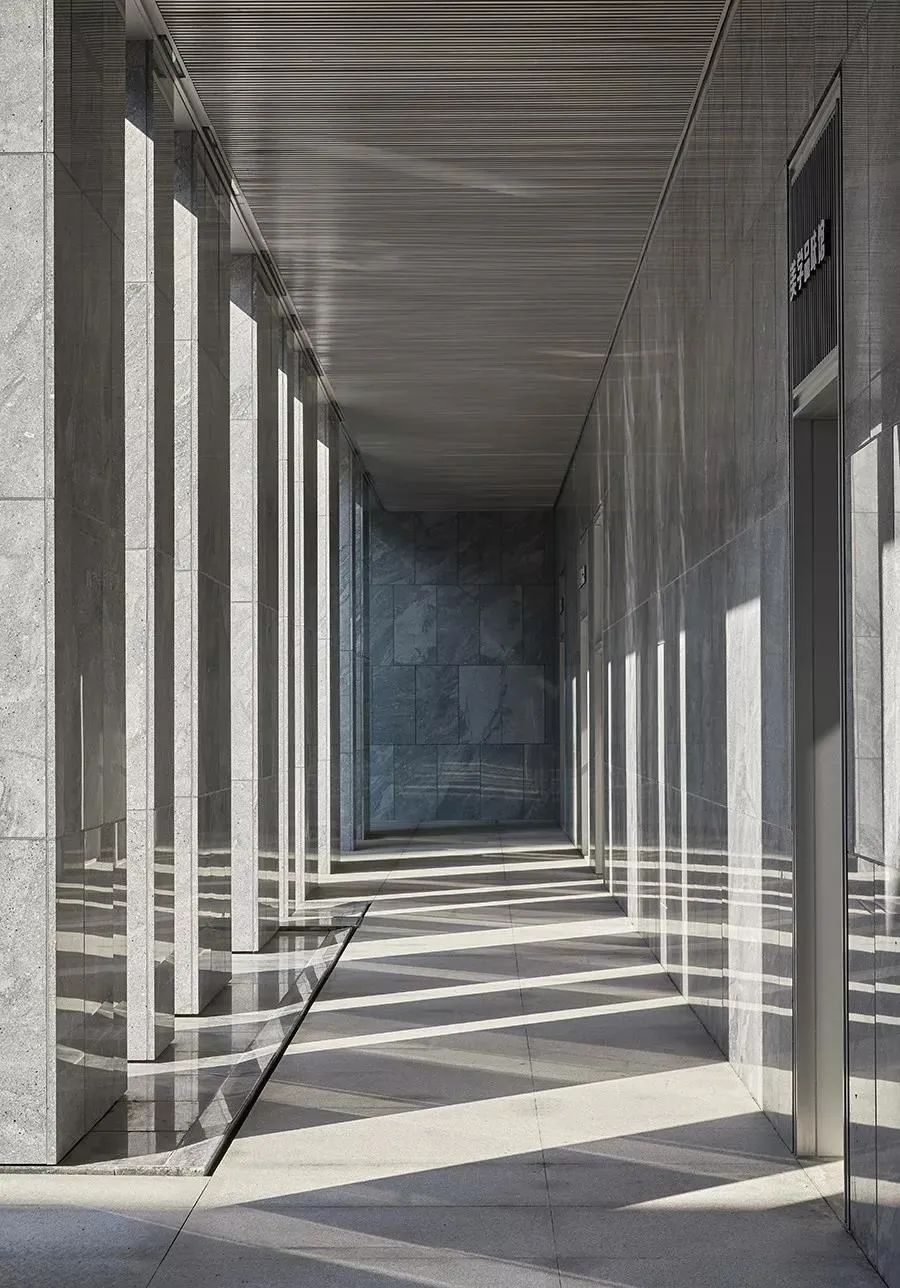
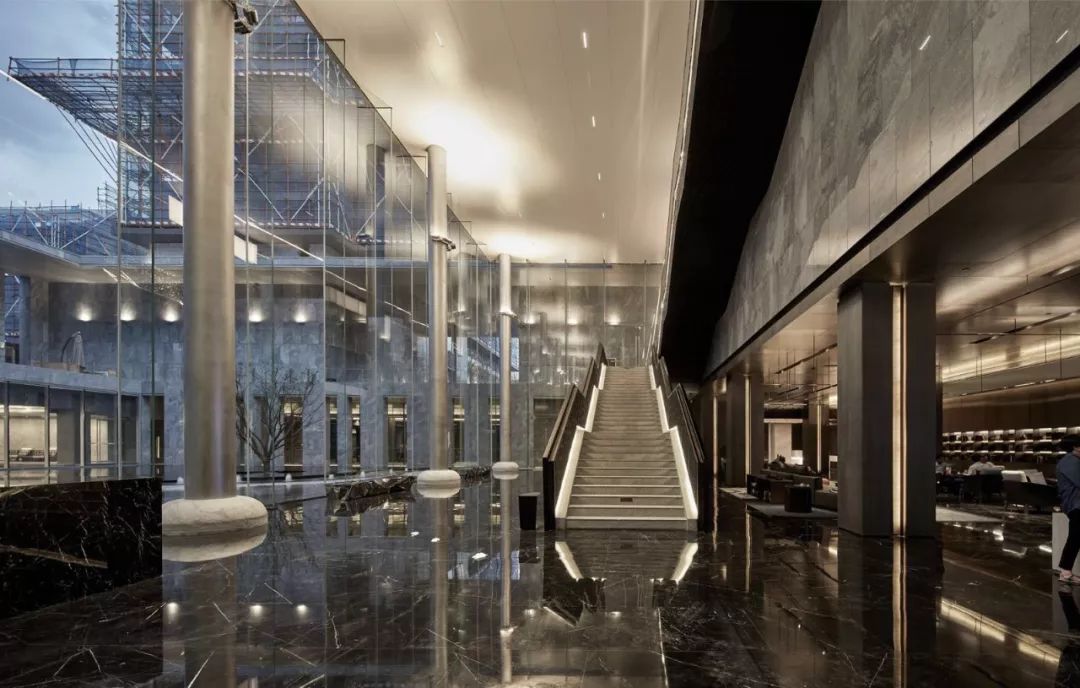
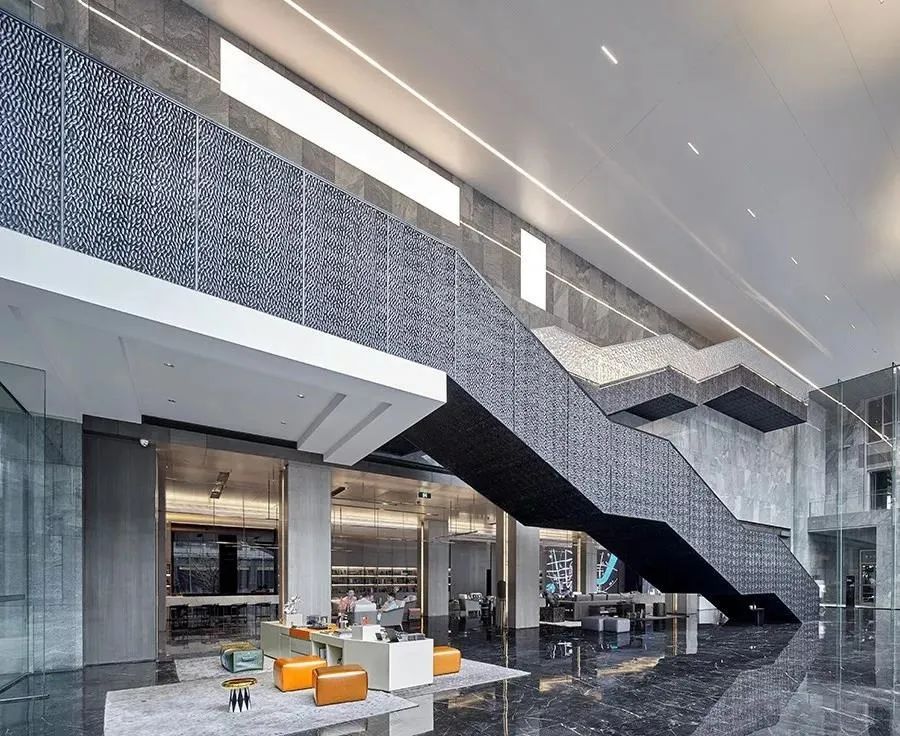
03 Processing at angle of 90°, the end face is polished
In order to realize the elegant texture of the overall architectural appearance, in terms of materials, a large number of stones are also used in the project to create a heavy artistic atmosphere. On the one hand, it is necessary to achieve better macro visual performance through reasonable stone partition; On the other hand, more consideration should be given to the facade stone partition and corner processing to ensure the perfection of details.
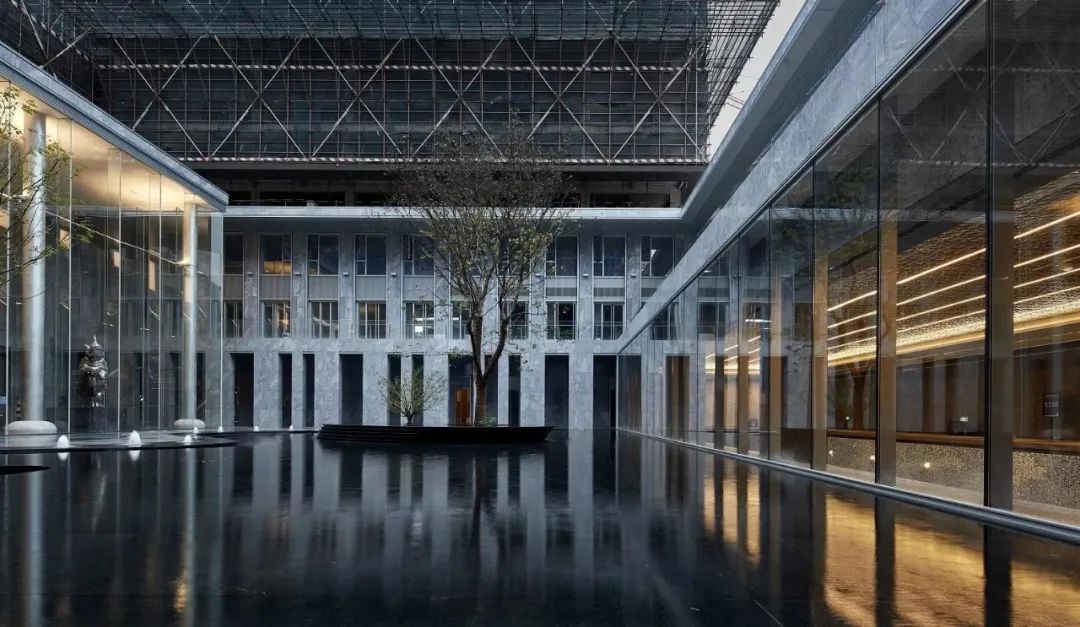
Currently, there are two main treatment methods for the positive corner of stone facade, namely, 90° splicing and 45° passivated positive corner, which have their own characteristics. The contact parts of stone materials in close range in the project are mainly concentrated in the commercial and inner courtyard corridors along the street, and glazed stone materials are used. If 45° passivated positive corners are used for splicing, there will be a notch after chamfering in the corner, which will destroy the integrity of the wall surface. Thus, 90° splicing technology is adopted, the glue lines are left on the side, and chamfering is used to control the edge collapse of stone. The end face of stone is polished like the main facade, which makes the effect of transition part more complete.
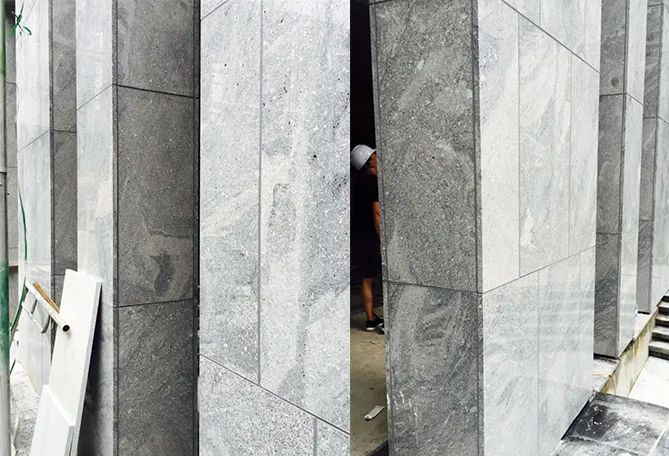
△In construction, the detail effect
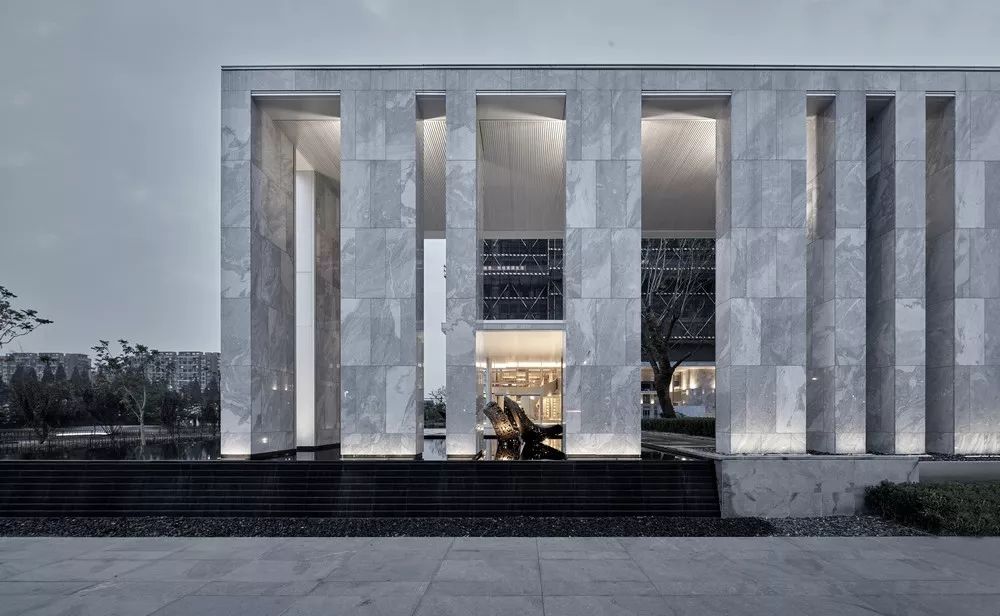
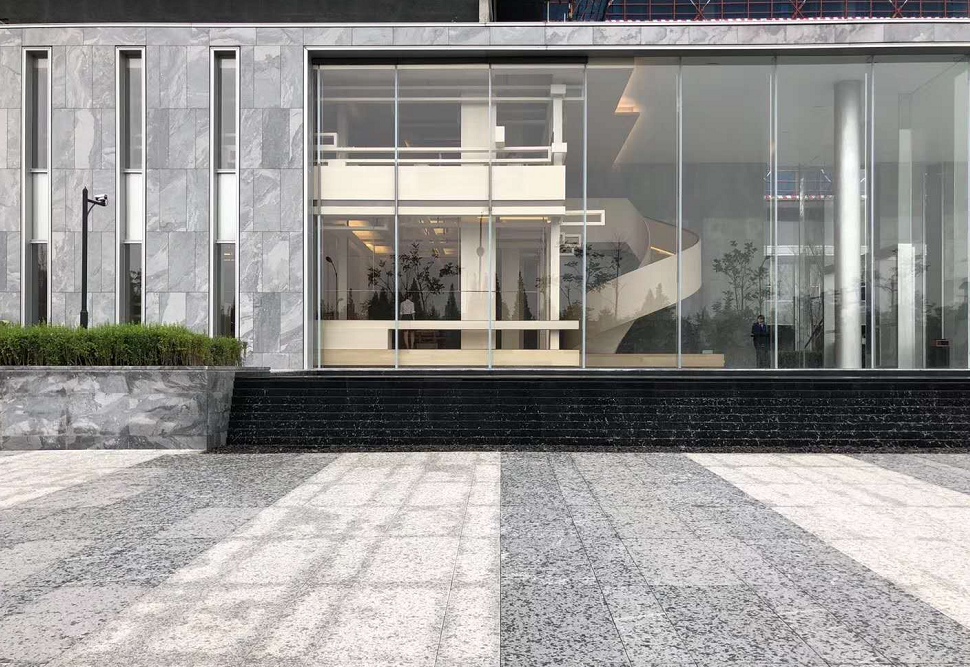
In the project design process, not only bold concept innovation is required, but also multi-party linkage and effective coordination of architecture, facade, landscape and interior are required, and the concept is put into practice. Finally, with the joint efforts of the design team, the indoor and outdoor space interfaces are continuously unified, perfectly integrated into the surrounding urban landscape, and also create a unique urban architectural texture and create a higher-level cultural symbol!
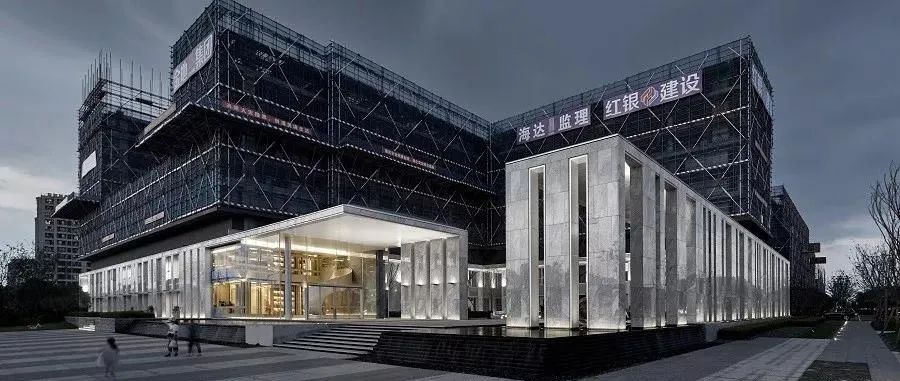
The photo materials of the article is reproduced from Architecture E Urban Design, which must be deleted if infringe the rights.
-

 Shijiazhuang Sunac Central Business District Exhibition CenterThe first ultra-low energy public building with a large curtain wall system in Shijiazhuang.
Shijiazhuang Sunac Central Business District Exhibition CenterThe first ultra-low energy public building with a large curtain wall system in Shijiazhuang. -

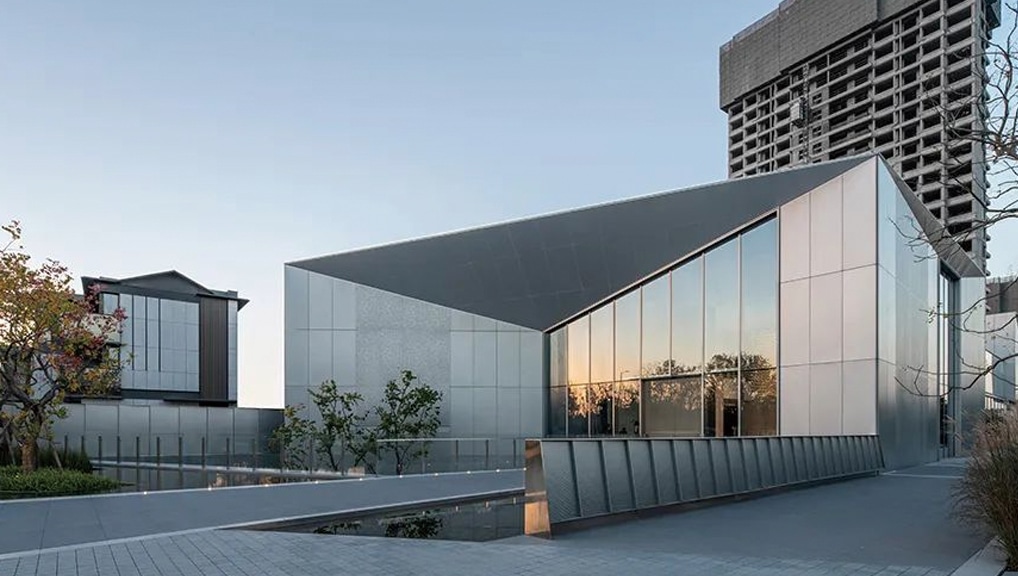 Hangzhou Renheng Changxiang Jianglan BayThe architecture is integrated into the urban skyline and the artistic language of the international community is made more 'contemporary'.
Hangzhou Renheng Changxiang Jianglan BayThe architecture is integrated into the urban skyline and the artistic language of the international community is made more 'contemporary'.







